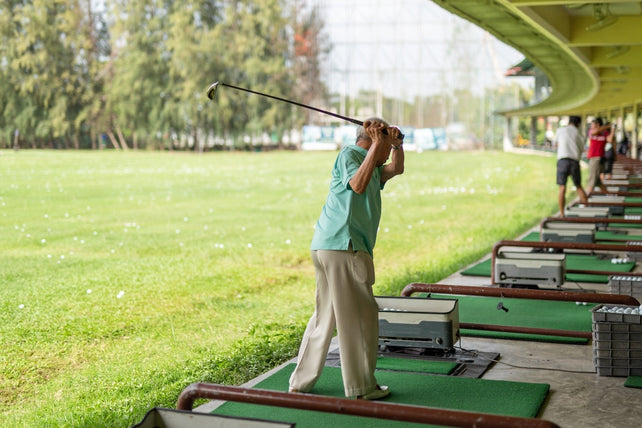How to Hit Longer Golf Drives
Oct 10, 2019
Golf isn’t as easy as it looks. There are many aspects to a golf swing. To hit longer golf drives, it’s important to know the anatomy of a golf swing and ignore misconceptions. For example, swinging harder doesn’t necessarily get the ball higher in the air or increase its distance. Posture, contact, and tempo are just a few factors that affect golf drives. With these golf swing tips, you can learn how to hit longer drives.
Posture/Stance
Placing your shoulders farther from the target with your hips stationary creates torque. The more torque you create, the more power you’ll have. Let your hips lead the way through the downswing, rather than rotating your shoulders and hips together. A seamless transition from backswing to downswing helps as well.
Contact
Proper contact is crucial if you want to hit longer drives. The ball should contact the center of the clubface. If you miss the center, speed is lost. Try hitting shots high and low on the face, toe, and heel (a golf swing monitor can help here). You want to improve your ability to hit any location on command.
Tempo
A novice golfer often equates swinging speed with greater ball distance, but you need an even tempo. To control the ball, allow the club to follow a natural motion through the downswing, rather than forcing it downward at the top of the backswing.
Ball Position
Place the ball forward in your stance and inside the left heel, with your feet shoulder-length apart (place the ball in the middle for short irons and wedges). Some tilt will give you momentum through the swing, so put 60% of your weight on the right side to improve contact with the ball.
Release
The release, a result of inertia created by club speed, is another secret to hitting long drives. Some golfers release too early, which can cause them to lose control. Concentrate on body rotation through the swing, as well as your timing. Also, follow through to maximize speed up to your contact with the ball.

Grip
A good grip on the club is essential. If you’re right-handed, place your left hand on top of the club and right hand below it (reverse this if left-handed). There are different ways to grip the club. Regardless of your method, too tight a grip can create shoulder tension that interferes with your swing.
What Is the Average Golf Swing Speed?
According to Golf Digest, the average male amateur golfer swings at 93.4 miles per hour and reaches an average distance of 214 yards.1 The smash factor, or how solidly you hit the ball, is a ratio of ball speed upon leaving the clubface and swing speed.
This is important to know, as is avoiding common mistakes such as swinging too hard, attempting unrealistic shots, or having too long a backswing. You can improve your game by practicing the golf swing tips above with a Foresight Sports golf launch monitor. Order our software or golf simulators online or call 858-880-0179 today to learn more.
Source:




































